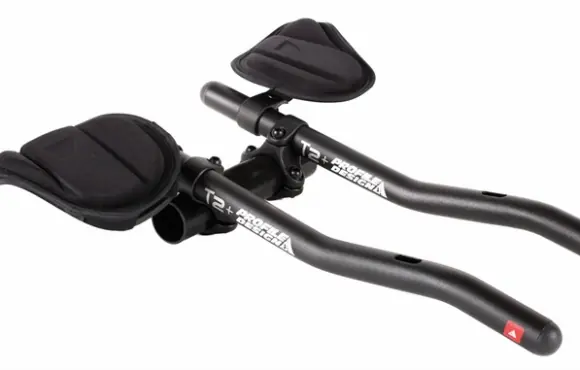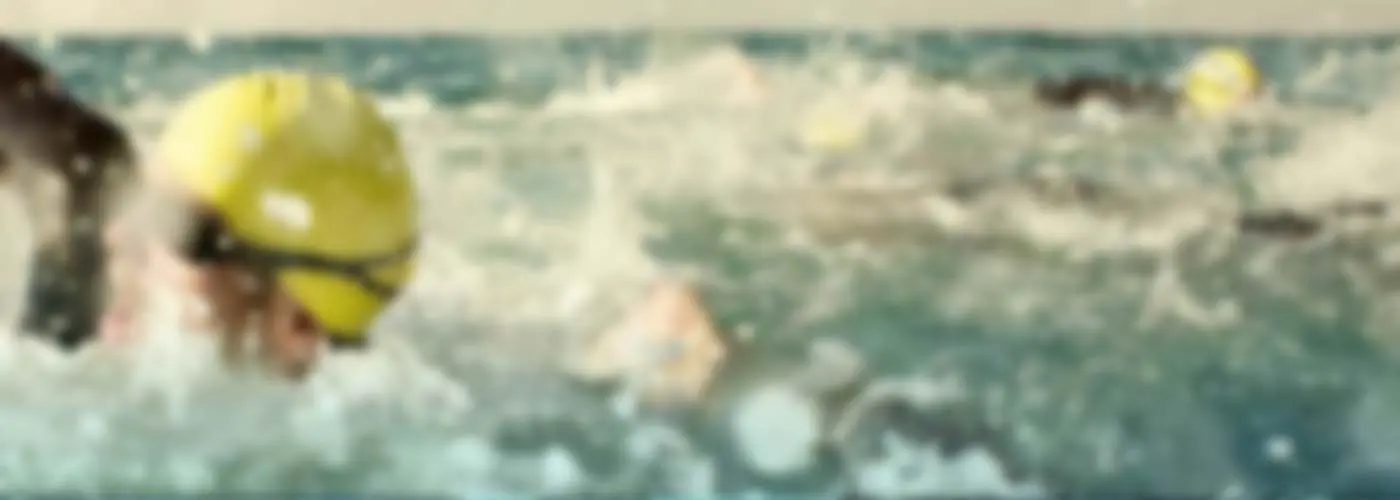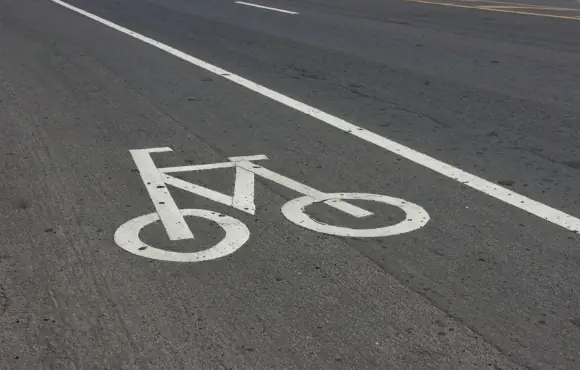Check out these seven pieces of bike gear that will make you faster while helping you save energy for the run.
Aerobars
1 of 8
Even if you don't have a dedicated triathlon bike, using a pair of clip-on aerobars is a must. While prices can vary depending on the weight and material used (aluminum versus carbon), a standard pair will cost you around $100. Pedaling at the same speed, you'll save somewhere in the neighborhood of 27 to 30 watts* of energy from the more aerodynamic position. By maintaining your wattage output, this equates to a 16- to 18-minute advantage during a long-course triathlon.
*Keep in mind that time-saving statistics will vary according to a number of factors, including rider weight, average speed and position on the bike.
Triathlon Bike
2 of 8
A dedicated tri bike won't give you the largest gains for your money spent, but it will give you a more efficient ride that cheats the wind more effectively than a standard road bike. On average, you'll save another 15 to 20 watts over a 112-mile bike leg compared to pedaling at the same speed on a road bike with clip-on aerobars. This correlates to a 10- to 12-minute time-savings at the same wattage.
A tri bike is likely more comfortable over long distances, too, which can play a factor in muscular fatigue. If you opt for a carbon bike, the additional shock absorption from the road over an aluminum frame can help you tconserve energy for the run as well.
Aero Wheelset
3 of 8
Wheels these days can sometimes cost more than the price of a good frame. While some options can top $4,000, there are plenty of budget options that range right around the $1,000 mark. Each company has its own numbers on how much time you'll save compared to a stock wheelset, but the overall time savings are evident—especially on a relatively flat course.
Zipp claims its rear disc wheel paired with a 80 mm front wheel saves two minutes for every hour of riding. This means that the longer your race is, the more you should consider an upgrade as an investment option.
Aero Helmet
4 of 8
All things equal, wearing a time trial helmet versus a standard road cycling helmet will net a one-minute savings over 25 miles. Considering that most aero helmets range in the neighborhood of $170 to $300, it's one of the most cost-efficient upgrades you can buy.
Do beware that most aero helmets don't offer as much ventilation, which could affect your performance on hot days. An aero road helmet like the Bell Star Pro could be a better option.
Power Meter
5 of 8
The key to getting the most out of your performance on the bike is to even out your effort, eliminating big spikes and drops in your power over the entire course. While heart rate can fluctuate based on a number of factors that can sometimes be unreliable, measuring your output based on watts is likely your best option.
All power meters were once near the $2,000 range, but now there are plenty of affordable models under $1,000. While it's hard to determine how much time you'll save (this depends at how good or bad you are at pacing yourself), a power meter can't be understated. With practice, you can perfect your pacing and give an even effort that you know you can maintain for the duration of the race—which can play a huge factor in your run performance.
Hydration System
6 of 8
According to Cervelo, water bottles on the down tube of a bike frame will increase your overall drag substantially. While cages that mount behind the rider by attaching to the seatpost have become popular options, they can be hard to reach. The more you sit up to reach for the bottle and have a drink, the less benefit you'll receive from those expensive purchases on aerobars and bike frames.
Cervelo's test on the P4 showed the largest drag reductions came from hydration systems mounted between the aerobars. This type of mounting system will not only remind you to keep drinking, but you'll also be able to stay in your tucked aerodynamic position while you hydrate. Being able to keep your eyes on the road and ride in a straight line without swerving is an added bonus that will also improve your overall time.
Fix a Flat
7 of 8
A flat tire can be a nightmare during a race. Depending on how good you are at removing your wheel, replacing the tube and refilling your tire with air, the whole ordeal can cost you anywhere between two to five minutes or more.
The Hutchinson Fast'Air inflator and sealant is a quicker alternative for fixing minor flats caused by thorns or glass. The device can be used on either tubular or clincher tires, and it'll seal minor flats in about 30 seconds. It will also simultaneously fill the tube with air, which removes the time spent fiddling with a CO2 cartridge or mini pump.







Discuss This Article